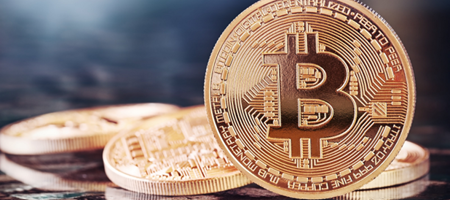What is cryptocurrency? (Part 2: Trustless, Decentralized & Immutable)

What is cryptocurrency? (Part 2: Trustless, Decentralized & Immutable)
Date: 17 Oct 2017
I’ve covered the failures of the modern financial system in my previous article, if you haven’t given it a read yet, you can check it out here.
Now, we’ve come to the conclusion that the modern finance industry and money itself is indeed broken, manipulated and debased by governments and banks. How then, does cryptocurrency resolve these issues?
It’s simple. Cryptocurrency removes the 2 key elements in the management of money and finance: Trust and Centralization.
I’ve been working on a new electronic cash system that’s fully peer-to-peer, with no trusted third party.
— Satoshi Nakamoto
The above quote is from the creator of Bitcoin, Satoshi Nakamoto. To be clear, while Bitcoin is a type of cryptocurrency, it is not the only cryptocurrency. However, most cryptocurrencies adopt the principles of Bitcoin in their creation and protocols, especially with regards to design of the set of rules governing them. A clear understanding of Bitcoin’s inner workings would greatly facilitate one’s understanding of any type of cryptocurrency as it was the very first one to be implemented from the concept. I would recommend you check out my article on Bitcoin if you haven’t.
To put simply, the aim of Bitcoin was to create a cryptographically secure currency that could be used as a form of universal cash and replace all forms of fiat currency in the world. What was not expected however, was that because Bitcoin code was open source, people could create their own version of Bitcoin by replicating and tweaking the code to suit their own needs, in essence starting a new cryptocurrency.
I say not expected because firstly, Bitcoin was so far ahead of its time when it began that it didn’t seem to make sense to create a competitor. Secondly, there needed to be some incentivization for people to switch from Bitcoin to something else. Given that it took a significant number of years for Bitcoin to accumulate any significant fiat value (as people had no idea what it was), the idea that a new cryptocurrency could accumulate value at a faster rate than something that had the first mover advantage was inconceivable.
Unexpectedly, the explosion of cryptocurrencies was actually accelerated with the growth of Bitcoin because more and more people saw the value within the idea of a decentralized, unregulatable, purely digital form of cash. Today, there are new cryptocurrencies being created every single day, all hoping to become the next Bitcoin.
For now, let me move on to some specifics on the inner working of crypto and we’ll come back to crypto as money later on.
________________________________________
Great nations are never impoverished by private, though they sometimes are by public prodigality and misconduct.
— Adam Smith
So, what makes cryptocurrency special? What makes it different from the government and bank debased fiat?
3 key characteristics as shown in the title of this article itself:
1. Trustlessness: In the case of fiat, you need to trust a third party to guarantee the value of your money by not debasing it. The buyer or seller of goods and services in the transaction must make the same assumptions you do; if 1 cow is worth 100 dollars today and 1000 dollars tomorrow, why would you sell 1 cow today? Cryptocurrency removes this need to trust someone by incentivizing every actor in the network to to not debase the currency and not commit fraud.
2. Decentralization: With banks and governments, the supply and creation of money through mints and interest rates are at their sole discretion. Users of the currency they control are hence, at their mercy. With cryptocurrency however, no individual or consortium is able to affect the supply of currency or exert significant influence over it without the approval of the majority. Even if there is majority approval, minorities are free to “fork” away and administer their own version of the currency. Consider this something like using cigarettes in the Weimar Republic if you think your currency is being debased and now worthless.
3. Immutability: When we want to check how money has been removed from our bank accounts, we are able to refer to our transaction history with the bank. However, doing so implies a few things: a) that we trust the bank does not fabricate false transactions and manipulate our money b) that we trust the bank delivers outgoing transactions to our intended recipients and c) that the bank employs sufficient security to ensure that other parties are not able to make these transactions on our behalf. When the element of trust and centralization is removed from the equation however, there is no longer any party to trust to do this. As a result, records need to be made public and unchangeable. The cryptographically secure nature of cryptocurrency ensures that while it is not impossible to change the transaction ledger, it is extremely difficult and would require you to oppose the entire network of cryptocurrency users.
How are these actually achieved? How can I be sure that cryptocurrency is not a fraud?
In order to understand how and why these characteristics of cryptocurrency exist, it is necessary to take a closer look at the technology underpinning every cryptocurrency: the blockchain.
________________________________________
“Blockchain Technology” is a term you have probably heard used a lot by many different companies, especially banks, hoping to capitalize on the cryptocurrency mania. What is not understood by many however, is that the blockchain was originally designed inherently with cryptocurrency. That is to say, it is not possible to separate both concepts* as the cryptocurrency underpins the security of the blockchain.
So what is the blockchain anyway?
To put simply, the blockchain is the public ledger of records. It contains the list of every single transaction, every single “account” and every single piece of data that has been sent through the network. It is also, permanent.
It’s unchangeability comes from the way the blockchain is derived. As its name implies, tt consists of segments called blocks which are individual, discrete units that are assembled into chain, aka the blockchain, via a process known as mining (for “Proof-of-Work” blockchains) or (in the case of some blockchains running on “Proof-of-Stake”) forging or minting. In all these cases, the aim of the process is to provide some cryptographic ‘proof’ to all other network actors to a) verify that the block being presented is valid b) transactions added to the block are not fraudulent. “Proof-of-Work” and “Proof-of-Stake” can be thought of as a Parliamentary vs Presidential democracy, they work in different ways but with the same aim: Of achieving network consensus on the next block produced/discovered.
Another similarity for both consensus mechanisms is that due to nature of cryptographic hashing the proof they present is not easily produced, but easily verifiable. These cryptographic hashes also confirm the identity of each individual block as each block assembled into the blockchain actually provides a clue to the identity of the next undiscovered block, the main feature which makes it tamper-proof. There is no way to change the data existent in a single assembled block without rendering all the subsequent blocks in the blockchain invalid.
And no one will allow you to render whole portions of the blockchain invalid as this would mean a) transactions that were carried out now do not exist b) all the incentives collected by miners in the subsequent blocks vanish. Such actions result in what are known as network splits and hard forks and are discussed in-depth in my article on What is the blockchain?
Thus, no individuals can “correct” the blockchain without opposing the entire network of other actors. This leads me to the next important point: How cryptocurrency is intertwined into the creation of the blockchain and how its the security is actually benefited by the selfish behaviours of individual actors.
________________________________________
Incentivization of individual network actors is a point previously mentioned briefly in discussing the trustless design of cryptocurrencies, do not however, think that it is a merely a feature; it is in fact the most groundbreaking idea in modern economics. For the purpose of this article, I will be limiting the scope to “Proof-of-Work” incentivization as it is the most widespread consensus mechanism in use today as well as an excellent starting point for understanding the solution presented by cryptocurrencies.
The incentive may help encourage nodes to stay honest. If a greedy attacker is able to assemble more CPU proof-of-worker than all the honest nodes, he would have to choose between using it to defraud people by stealing back his payments, or using it to generate new coins. He ought to find it more profitable to play by the rules, such rules that favour him with more new coins than everyone else combined, than to undermine the system and the validity of his own wealth.
— Satoshi Nakamoto
With fiat money, fraud is committed is because of selfish profit motives: the individuals performing the fraudulent actions have everything to gain and nothing to lose if they are not discovered or if they are beyond the reach of the law. With cryptocurrency, a system is produced that no one stands to benefit with fraudulent actions. In fact, they stand to benefit performing non-fraudulent actions instead.
Network actors are categorized into 3 non-exclusive categories:
1. Users, who are the people transacting and owning crypto,
2. Full nodes, the network of machines that run verifications against the blocks produced, and
3. Miners, the profit maximising entities providing computational power to discover new blocks and power the blockchain.
Remember, they are non-exclusive: A miner is always both a full node and a user, a user could or could not be a full node, a node could be just a node and so on.
Mining was briefly covered above, but the profit that the miners are seeking was not explained. To be brief, miners get 2 form of rewards for taking risks and expanding electricity and buying complex computers to provide the computational power to find new blocks: the block reward and transaction fees.
The block reward is a fixed amount of cryptocurrency determined by the protocol, or the set of rules governing crypto that is decided upon by the network, that is awarded to miners for discovering blocks. Think of it as the same as a mint that produces money and introduces liquidity to the economy, except not controllable by a central entity and with no ability to manipulate the supply of currency. Block reward is usually either static or unchanging in the case of inflationary cryptocurrencies with no maximum supply, or decrease every certain number of blocks in the case of deflationary cryptocurrencies with a maximum limit to the amount of crypto produced. Transaction fees are offers in crypto that users declare that they are willing to pay to have their transaction confirmed and added to the blockchain. This is similar to taxes or service fees charged by payment processors (however, at a fraction of their cost). Miners are able to select the transactions they wish to process to add to the blockchain and will tend to select transactions with higher transaction fees in order to maximise their profit. Thus, higher transaction fees means your transaction is processed faster. Compare this to a centrally controlled fiat supply where the only cost of producing more money is the paper that it is printed on.
Now that the incentivization of miners is apparent, how about full nodes and users? What incentive do they stand to gain from not committing fraud?
In the case of full nodes, the incentive is not immediately apparent as it is not monetary in nature. Instead, full nodes benefit from security as they are able to confirm that transactions sent to them are valid. Any user that is not running a full node, relies on secondary information provided by another full node to determine if transactions are fraudulent or not. Fortunately, due to the decentralized nature of cryptocurrencies, there are some built in checks and balances even with running a thin client (aka non-full node) that will be discussed shortly. Confirming fraudulent transactions may also cause your node to become blacklisted, and essentially essentially from the network of trusted nodes, thus receiving no confirmations from others and becoming worthless even as a form of security for yourself.
The problem in this world is to avoid concentration of power — we must have a dispersion of power .
— Milton Friedman
Lastly, how about users? To clarify a few things, the type of ‘fraud’ discussed is monetary fraud, not the kind of fraud that confidence tricksters pull. Users can still be scammed, phished or conned and cryptocurrency is unable to prevent that; the same way one can be pickpocketed, mugged or robbed with fiat currency. The benefit of crypto comes in being unable to be defrauded by banks, be it through identity theft or breached bank security. With cryptocurrency, as there is no third party to trust, you will be entirely responsible for your own money. Additionally, users get the choice of voting with their wallets. If fraudulent transactions are submitted, they have a choice of performing a hard fork and rejecting the transactions entirely and removing their value from the blockchain; this is concept is covered in more detail in my article on the blockchain.
With this three pronged approach where each of the 3 different “parties” in the network polices each other’s actions, and even within the “parties”, individual actors may disrupt potential fraudulent gain due to wanting to maximize their own profit, cryptocurrencies are a lot more secure than trust based fiat. Hopefully, the article makes clear how cryptocurrencies are able to prevent fraud via their characteristics of decentralization, trustlessness and immutability.
But with all this talk about cryptocurrency replacing money, what about its utility as money? Can it be actually used to transact? Wouldn’t you need to wait for a long time? Isn’t the price overly volatile?
In my next part, I will discuss the utility and price considerations for cryptocurrencies and cover these concerns.
________________________________________
(continued in part 3…)
*Note: There are recent blockchain implementations such as Microsoft’s Coco framework where the separation of crypto from the blockchain is possible but through very specific mechanisms. Majority of “private” blockchains today suffer from missing entirely the point of having a public, unchangeable ledger of records.
If you are interested in working in this exciting emerging industry have a look at our vacancies HERE or contact neil@cryptorecruit.com
Back to News Share to LinkedIn
Share to LinkedIn Share to Twitter
Share to Twitter Share to Facebook
Share to Facebook Back to news
Back to news




